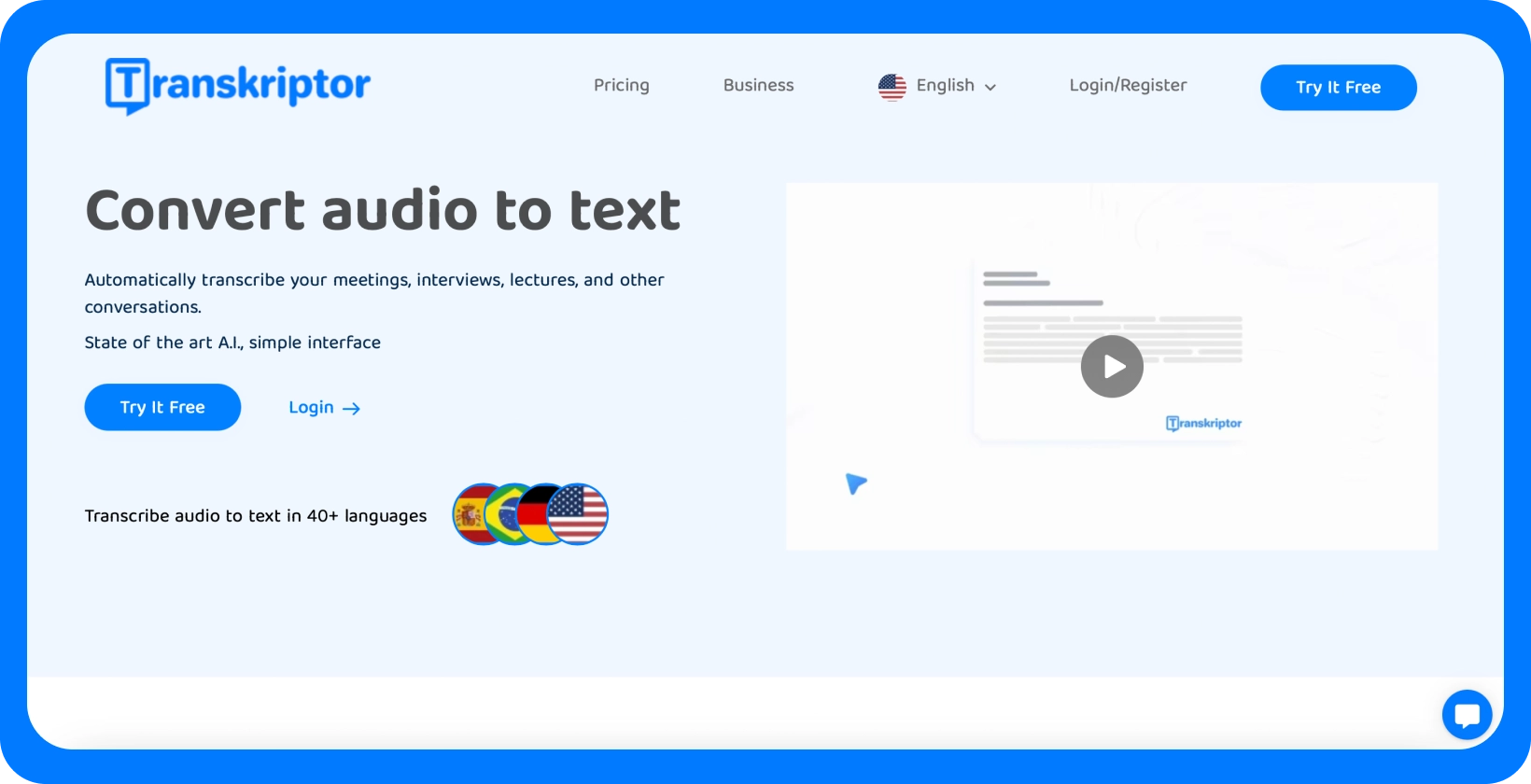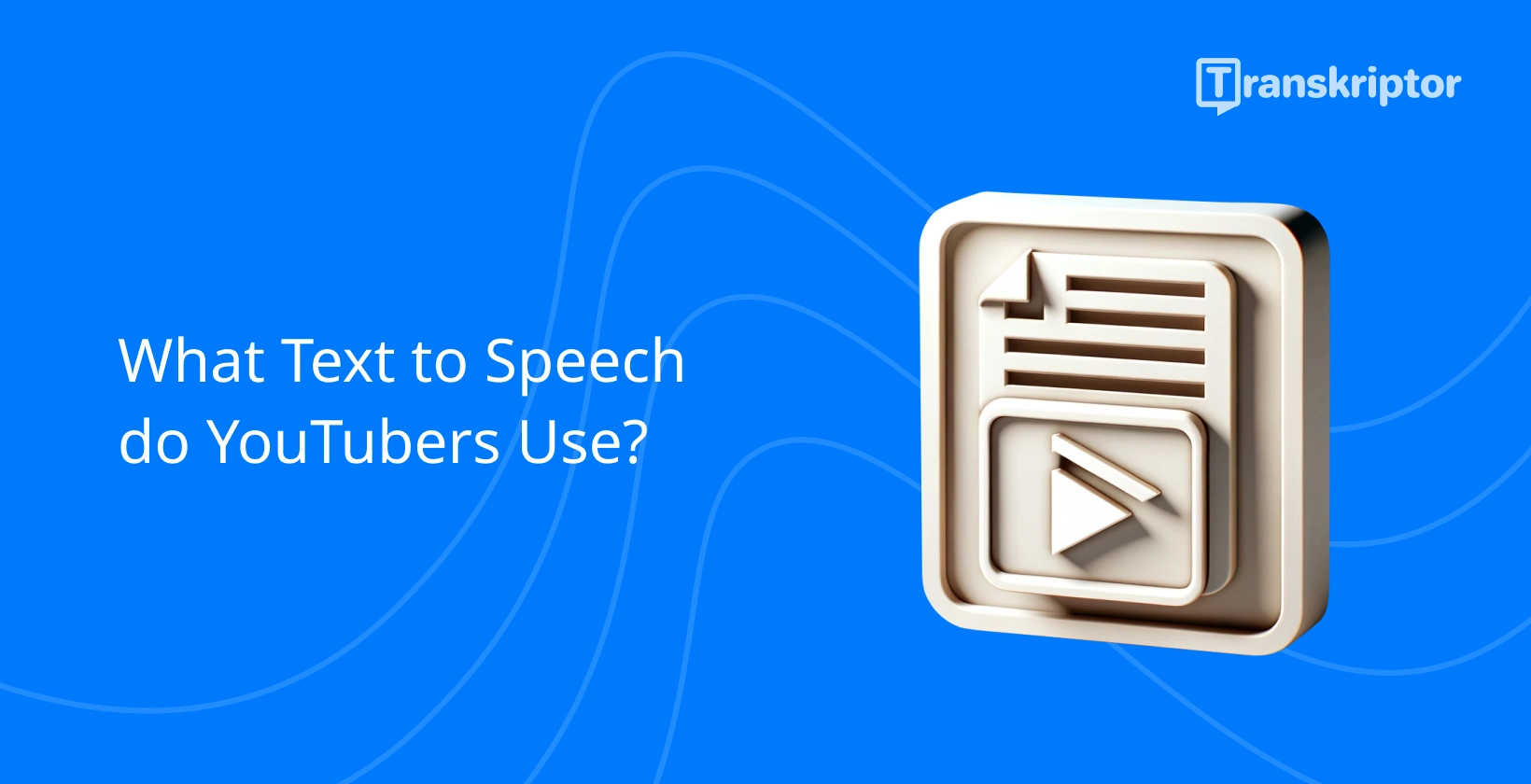
Why do YouTubers use Text-to-Speech?
This may be a new phenomenon to you and I get it as most people think that all YouTube videos use natural narration and audio. The reality is that they don’t and audio to text AI software is used more widely than you expect.
Simply put, by using text-to-speech tools, YouTubers can get more done, save money, and concentrate on other factors of their videos like the content and editing with software like Adobe Premier Pro . It makes for a more timely and cost-effective way to run your channel. I summarize the main benefits below:
- Improves content creation efficiency.
- It is often a more cost-effective method than hiring a voice actor.
- It caters to YouTubers who lack confidence in their voice.
- As the technology develops, the speech quality will only improve.
Popular Text-to-Speech Software and Tools
Today, YouTubers and content creators have a wealth of speech tools available to make their job easier and I have listed some of the top picks below.

Transkriptor
Transkriptor is primarily a speech-to-text service but it also does the reverse with its Speaktor software. The web-based interface is especially easy to use and I like how you can easily choose from the different voices with both male and female options. The pricing is affordable too with the Lite package costing just $4.99 per month which gives you 300 minutes of text to speech conversion.
Natural Reader
Natural Reader benefits from one of the simplest interfaces available and it’s easy to upload your text, select a voice, and create the audio output. Aside from things like Word documents and PDFs, Natural Reader can also recognize speech from things like photos and scans. There is a free version too but it has limited functionality, and the premium subscription is nearly double the price of Transkriptor.
Balabolka
Balabolka is a free text-to-speech service that features both SAPI 4 and SAPI 5 voices, but you can also use the phonetic transcription Microsoft Speech Platform. With the voice selected, you can make changes to things like pitch and volume and the software can be used to read simple words and paragraphs, or more complex narrations.
WordTalk
WordTalk is a solid option if you want an integration with Microsoft Word. It installs as a toolbar for Word and gives the document software simple but effective text to speech functionality. The toolbar looks pretty dated and you have to look past this, but it supports SAPI 4 and SAPI5 voices and is easy to work with.

Factors Influencing Voice Selection
If you are considering using text-to-speech to create audio content for your videos you must think carefully about the voice selection.
Typically software like Transkrpitor gives you the option of multiple voices in both male and female and with a variety of accents both regional and national. For example, you could create audio with a female voice with a strong Scottish accent.
That’s fine, but the accent and voice type have to fit the content and your intent and the following considerations should be made when picking a voice:
- Who is the intended audience?
- What is the nature of the content?
- Are you appealing to a specific geographic demographic?
- What age range is the target audience?
These things should help you select an appropriate voice that won’t sound weird when aligned with your video content.
Challenges and Limitations of Text to Speech for YouTube
Although TTS sounds fantastic for YouTubers, it has limitations and the technology still has room to develop. Common challenges and issues include:
- The voices can sound robotic.
- Pronunciation errors can be made.
- Grammatical errors are also common.
Sometimes it is easy to spot when a TTS program has been used to create audio as the speech may sound a little robotic. This is why it’s important to look for software that recognizes punctuation or that allows you to apply intonation. A simple recognition of things like commas and question marks can greatly improve the authenticity of the audio quality.
We’ve all heard hilarious examples of TTS-generated speech too where the AI voice pronounces words horrifically and this still hasn’t been completely eradicated. In time, I’m sure the technology will be perfected, but for now, these limitations can reduce the overall audio quality.
Text to Speech Tools Improve YouTubers' Productivity
As you can see, text-to-speech is becoming more common in the world of content creation as it improves productivity and also helps content creators who do not have confidence in their narration or storytelling skills. Software like Transkriptor are popular choices and give YouTubers the freedom to try out different voice styles and get their videos published quicker using a YouTube video summarizer .

